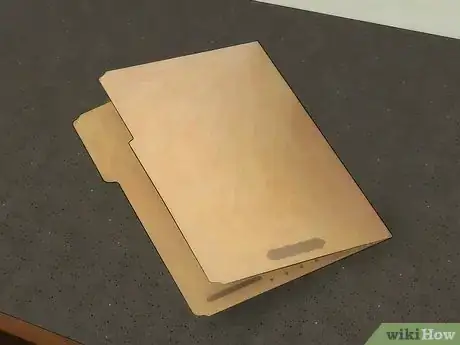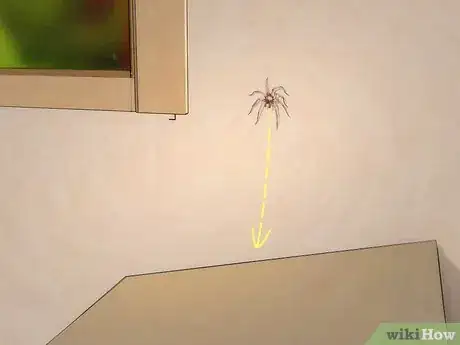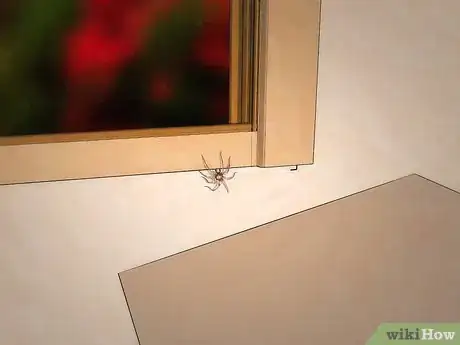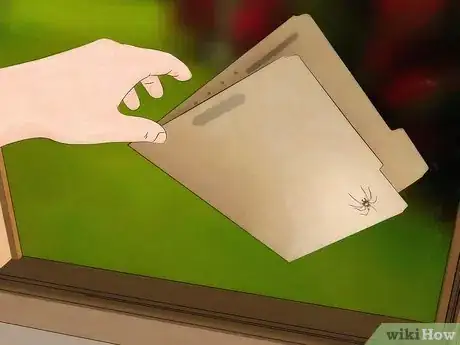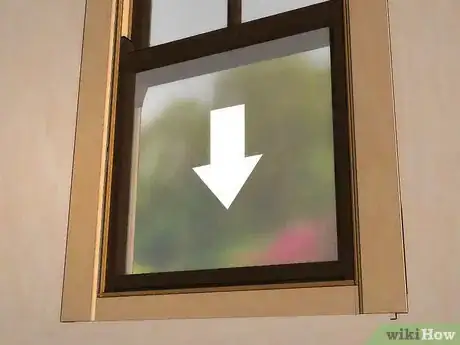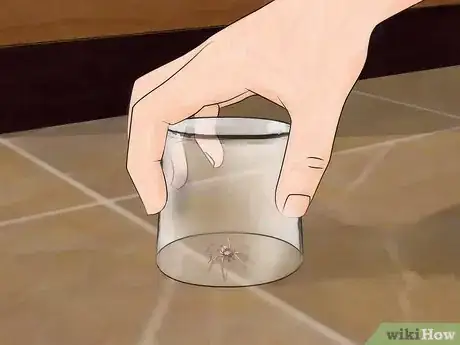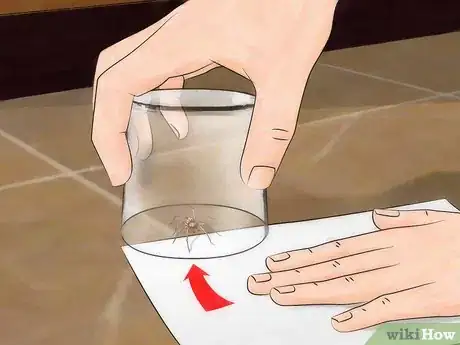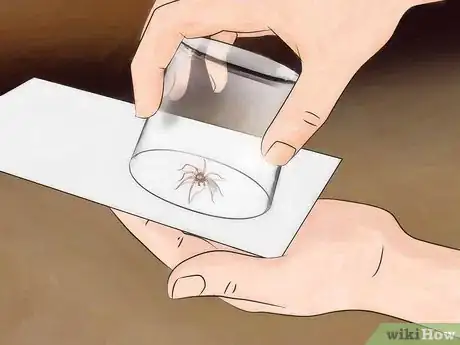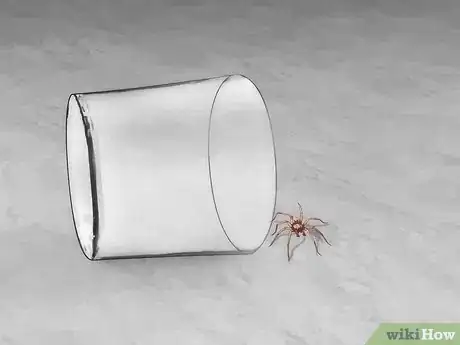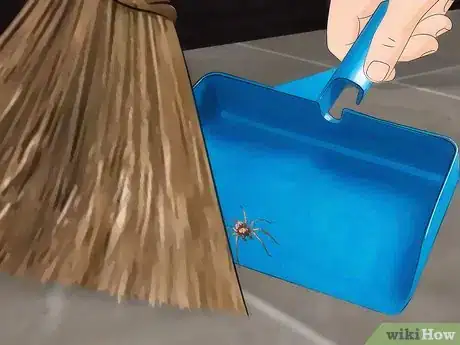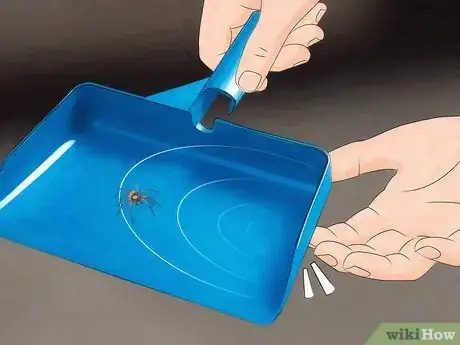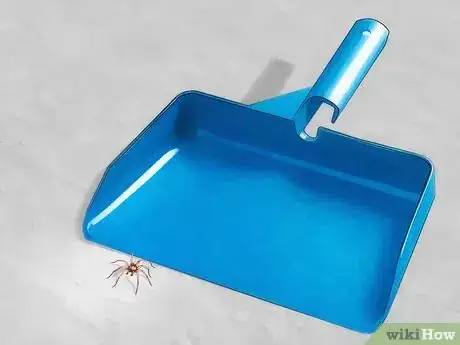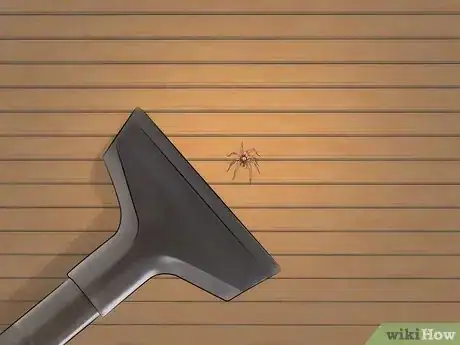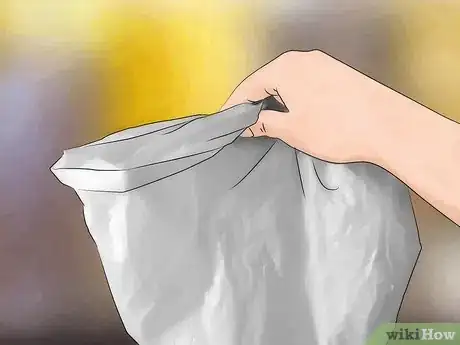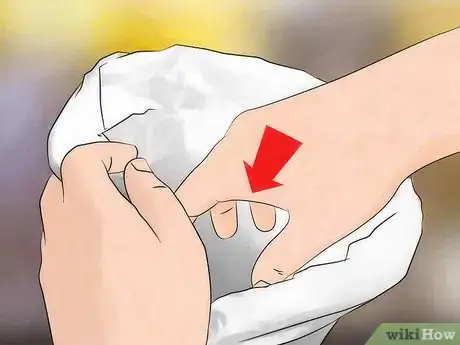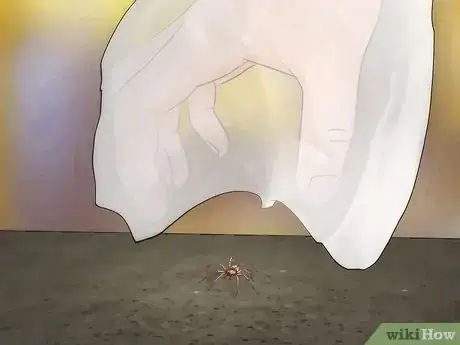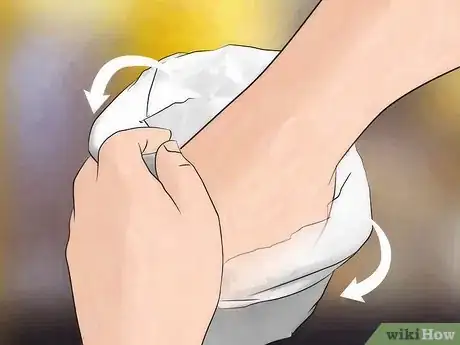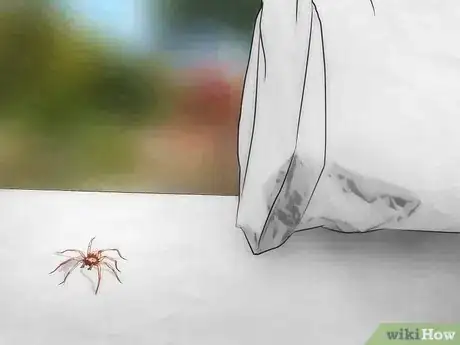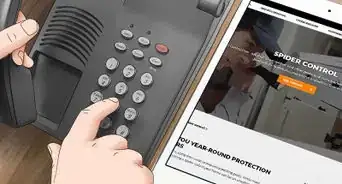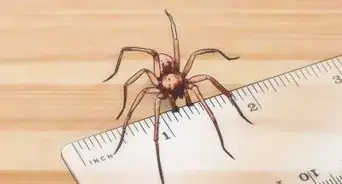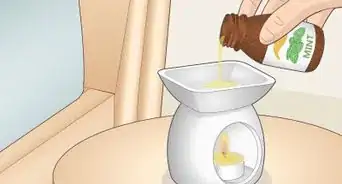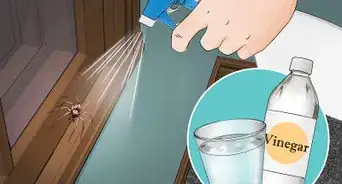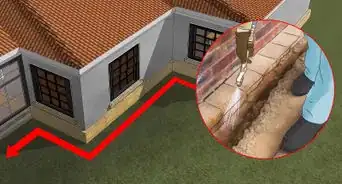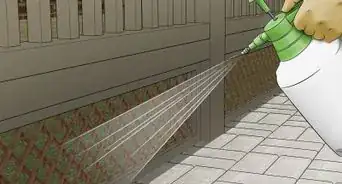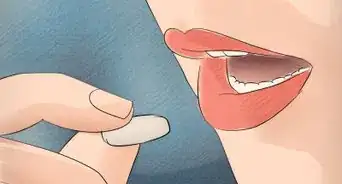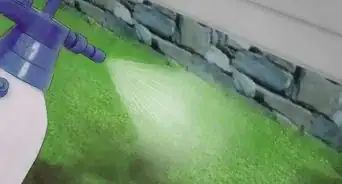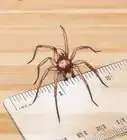This article was co-authored by Hussam Bin Break. Hussam Bin Break is a Certified Commercial Pesticide Applicator and Operations Manager. He and his brother Hussam co-founded Diagno Pest Control in the greater Philadelphia area in 2018, and have since expanded their services to include the New Jersey market. Diagno Pest Control has received Home Advisor's Top Rated and Elite Service Badges for quality of work and customer service.
There are 11 references cited in this article, which can be found at the bottom of the page.
This article has been viewed 304,083 times.
While most people would consider spiders to be unwelcome house guests, you don't have to kill them and can instead use a catch-and-release method to make your home spider-free. There are a few simple methods you can use to catch the spider and guide it outside. Even if you are afraid of spiders, you will be able to use these methods and have minimal contact with the spider. Before capturing the spider, you will want to make sure it's not venomous so that there is no risk of being bitten and needing to seek medical care.
Steps
Nudging the Spider Outside
-
1Open the door or window that the spider is near. If the spider is non-venomous, there are a number of ways to get it out of your home. If the spider in your house is already close to a window or door, you can find ways to encourage the spider out. You will first want to open the door or window to show the spider the way out of the house. [1]
- Try to step around the spider and open the door or window slowly. If you scare the spider, it may run and hide somewhere, and you won’t be able to get it outside as easily.
-
2Find an object to block the spider’s path. Find an object like a notebook, folder, or book that you can move around the spider if it tries to go in a direction that’s not the open door or window. Anything that is tall and flat will work.[2]Advertisement
-
3Guide the spider out. Take the notebook or folder and gently give the spider a nudge toward the door. The spider will be scared and start moving. If the spider veers away from the door, take the notebook and put it next to the spider to create a wall so that the spider won’t be able to run in that direction anymore. Keep doing this until the spider starts running in the right direction.[3]
-
4Guide the spider over the threshold. The spider may hesitate on the threshold as it is running toward the door. If the spider lingers on the threshold, brush it out using your hand or the notebook or folder. You also could flick it with your finger.
-
5Throw the folder out the door if the spider crawls on it. When you are using the folder to guide the spider out of the door, the spider may start crawling on the folder instead of running. If the spider crawls onto the folder, toss the folder out the door, so that both the spider and the folder are outside. The spider will eventually crawl off the folder, and you can go and retrieve the folder later.
- You may not feel comfortable throwing the folder out of the door or window, especially if you live in a communal space like an apartment complex. If the spider crawls on the folder, instead of throwing it you can go outside with the folder and either brush the spider off with your hand, or wipe the folder on a bush or the windowsill until the spider falls off.
-
6Close the door or window. Now that the spider’s gone, you don’t want it to come back! Make sure that you close the door or window so the spider or other bugs can’t come in.
Using the Paper and Cup Method
-
1Place a cup over the spider. This works best for spiders on the floor or on the wall. Approach the spider slowly, so that it doesn’t get scared and start running. Quickly, take a small cup and place it directly over the spider, so that the spider is trapped inside.[4]
- Preferably the cup should be clear so that when you trap the spider, you can see it inside the cup. However, you can use any cup that you have in your house.
- Make sure to aim correctly so that the spider is unharmed. You don’t want to crush the spider or any of its legs with the rim of the cup.
-
2Slip a piece of paper under the cup. Take a sheet of paper and slide it underneath the cup. Make sure that the piece of paper is under the entire cup. This will make sure that the spider won’t be able to escape when you lift up the cup.[5]
- The paper should be just one sheet, as opposed to a book or notebook. A stiff piece of paper like a notecard or index card works best.
- If the spider is dangling from a web, you will want to place the cup under the spider, and then either cut the web using scissors or use the piece of paper to break the web. The web and spider will stick to the piece of paper, and you will be able to bring the cup up to the paper and trap the spider.
-
3Lift up the cup and the piece of paper. You want to lift up the piece of paper and the cup so that the spider is still trapped inside. Make sure that as you are lifting, the rim of the cup and the paper are always against each other so that the spider does not escape. [6]
- One way to lift the cup and paper is to hold the edge of the piece of paper with your left hand, with your right over the bottom of the cup.
- Lift the edge of the piece of paper, still holding the cup over the paper. Slip the fingers of your left hand under the piece of paper so that your hand is on the part of the piece of paper underneath the cup.
- Now with your hand underneath the paper and cup, you can lift up the trap and carry it to your door.
-
4Let the spider out of the cup. Carry the spider over to the door. Open the door and step outside. Place the trap on the ground, and take the cup off the spider. The spider should run away. If the spider is not moving, try gently blowing on the spider. You can also brush the spider off with your hand if you’re feeling brave! [7]
Using a Dustpan or Vacuum
-
1Sweep the spider onto the dustpan. If the spider is on the floor, sweep the spider onto the dustpan. You can also do this if the spider is on a wall, but be careful not to sweep the spider on you![8]
-
2Gently tap the underside of the dustpan. With the spider on the dustpan, head to the door. As you are walking, tap the underside of the dustpan with the sweeper or with your fingernails. The noise and the vibrations of the tapping will scare the spider so that it stays still and doesn’t run off the dustpan.[9]
-
3Release the spider outside. When you get outside, place the dustpan on the ground. The spider should run off. If it doesn’t, you can leave the dustpan there until the spider leaves it, or you can use the sweeper to sweep the spider off the dustpan.
-
4Use a vacuum. If using a dustpan is too up close and personal with the spider for you, use a vacuum instead. On the lowest setting, vacuum up the spider. Then empty out the filter outside of your home.
- You can use a regular vacuum cleaner, but be warned that this may possibly kill the spider. A dust buster is a slightly better option.[10]
- You can also buy vacuums made especially for bugs and insects. You can purchase these on Amazon.
Using a Plastic Bag
-
1Get a plastic bag. Use a plastic bag that is easy to turn inside out, like a plastic shopping bag. You also want to be sure that the bag is big enough so that your hand will fit inside it. Make sure that the bag doesn't have any rips or holes. [11]
-
2Put your hand inside the bag. Make sure that you are able to move your fingers inside the bag. You are going to grab the spider with the bag, so you want to make sure that the bag is flexible enough to do this. Walk over to the spider with the bag on your hand.[12]
-
3Grab the spider. With the hand that is inside the bag, grab the spider. Try to be gentle and not to squeeze, or else you could kill the spider. Try to grab the spider so that it is surrounded by the bag and is not being squeezed between your fingers.
-
4Turn the bag inside out. Quickly, before the spider can escape, turn the bag inside out. This way the spider will be trapped inside the bag. Pinch the top of the bag so that the spider can't escape out the top. [13]
-
5Release the spider. Take the spider outside and shake out the bag. The spider should come out. You also can leave the bag outside and come back for it later, but be sure to remember, you don't want to litter!
Warnings
- Black Widow spiders are large black hairless spiders. They have a big abdomen with a red mark on the top, and one on the bottom shaped like an hourglass.⧼thumbs_response⧽
- Always check to see whether the spider is a Black Widow or a Brown Recluse. Both of these are venomous spiders.⧼thumbs_response⧽
- Brown Recluse spiders are brown, violin-shaped spiders, usually about ¼- ½ inches long with three eyes instead of the usual four.⧼thumbs_response⧽
- If you do catch a venomous spider, set it free far away from your or anyone else's home.⧼thumbs_response⧽
- Don't ever attempt to catch a venomous spider by hand. It's actually not a good idea to catch a venomous spider unless you've done it before. Even then, it's risky business.⧼thumbs_response⧽
- Consider killing a venomous spider instead of catching it and setting it free. It isn't worth risking a bite.⧼thumbs_response⧽
- If you get a bite from what you believe is a venomous spider, elevate the site of the bite and get medical attention immediately.⧼thumbs_response⧽
Things You'll Need
- A clear cup
- A plastic bag
- An index card or sturdy piece of paper
- A dustpan and sweeper
References
- ↑ http://www.mirror.co.uk/news/uk-news/five-best-ways-rid-giant-6295020
- ↑ http://www.chroniclelive.co.uk/news/local-news/spider-season-newcastle-five-ways-7825421
- ↑ http://www.mirror.co.uk/news/uk-news/five-best-ways-rid-giant-6295020
- ↑ https://www.huffingtonpost.co.uk/entry/spider-season-guide-to-removing-them-from-house_uk_5d6e3066e4b0cdfe0575305d
- ↑ http://pestkill.org/insect/spiders/
- ↑ http://www.chroniclelive.co.uk/news/local-news/spider-season-newcastle-five-ways-7825421
- ↑ http://www.telegraph.co.uk/comment/personal-view/6231601/Spider-in-the-bath-Catch-it-dont-kill-it.html
- ↑ http://www.chroniclelive.co.uk/news/local-news/spider-season-newcastle-five-ways-7825421
- ↑ http://www.mirror.co.uk/news/uk-news/five-best-ways-rid-giant-6295020
- ↑ http://www.smithsonianmag.com/smithsonian-institution/what-happens-spiders-sucked-into-vacuum-180956331/
- ↑ https://experiment.com/u/AT5RHw
- ↑ https://www.khanacademy.org/partner-content/cas-biodiversity/how-is-biodiversity-studied/biodiversity-fieldwork/a/how-entomologists-catch-insects-spiders-and-other-creepy-crawlies
- ↑ https://www.khanacademy.org/partner-content/cas-biodiversity/how-is-biodiversity-studied/biodiversity-fieldwork/a/how-entomologists-catch-insects-spiders-and-other-creepy-crawlies
- ↑ http://www.earthkind.com/learning-center/control-spiders/how-to-get-rid-of-spiders-from-your-home-safely-and-permanently#.V0TiQe1Viko
- ↑ http://www.independent.co.uk/news/science/how-to-keep-spiders-out-of-your-house-10500086.html
About This Article
If you don’t want to kill spiders in your house, you can use a catch-and-release method to remove them. If the spider is near a door or window, open it slowly and see if it goes out on its own. If it doesn’t, you may need to transport it outside. Take a flat object, like a folder or notebook, and put it in the spider’s path so it crawls onto it. Then, quickly bring the object outside and let the spider crawl away. If you’re scared of touching the spider, place a clear cup over the spider. Then, gently slide a sheet of paper under the cup until it covers the whole opening. Lift the paper and cup together so the spider stays trapped insider and take it outside. To learn how to use a dustpan to remove a spider, read on!

